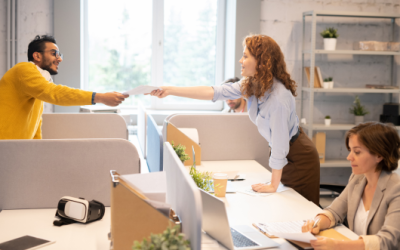In our last blog, we shared the story of Gerald Manes who owns a security system installation company called GMInstalls. From the time he implemented his company’s CRM, the quality of leads increased and the cycle to close a sale shortened. Gerald was happy and began looking at his CRM data to see what he could learn from his customers to provide better service and solutions.
Here is what he saw in his data:
- Home surveillance cameras were a top seller.
- About 50% of sales bundled cameras with video doorbells.
- 35% of those who bought from him asked about smart locks and 75% of those who asked wanted to install a smart lock at their short-term rental.
This last piece of data stood out to him because he did not offer smart locks. If 35% were asking, Gerald wondered how many other customers would buy smart locks if they had the option. He could see how the smart locks would benefit his clients, from controlling the codes to managing the smart lock from their phone or smartwatch.
Gerald spoke with his security system distributor and decided to add smart locks to his offerings. After he chose the systems that he wanted to sell and provided training for his technicians and salespeople, he was ready to go to market with the new product. To do this, he reached out to his CRM specialist to learn how he can use his CRM to introduce the product.
The CRM specialist advised Gerald to: Segment his contacts using “Buyer Interest” as the criteria; Set up drip campaigns where messaging and length are based on each segment’s sales cycle, and Track his lead sources.
Segment Gerald’s Buying Public
Gerald’s prospects and customers are all potential buyers of smart locks, but how they respond to the new product is different. Based on their likely “Buyer Interest” response, he decided to segment his customers in four categories:
- Ready to buy a smart lock system. Customers in this segment have already asked about smart locks. This segment already has a short-term rental or vacation home with a security system.
- Will seriously consider a smart lock system. This demographic knows the technology exists but does not know anything beyond that. They like the idea of keyless entry using codes and voice control. They are ready to learn about smart lock technology and even buy it.
- Unfamiliar with smart lock technology. This demographic has a security system out of necessity. If their home is protected, they are satisfied. They will need to see the benefit of smart locks and how it will make daily life more efficient with additional peace of mind.
- Undecided prospect. This demographic is considering a security system before smart locks are introduced but have not decided to buy.
Deliver Segmented Messaging Automatically
The purpose of a drip campaign is to nurture customer segments based on their readiness to buy. Gerald created a drip campaign for each segment based on its likely sales cycle.
The Ready to Buy segment did not need an extensive campaign because they were “ready to buy.” Gerald created a 4-email drip sent over 2 weeks to focus on the benefits of smart locks with short-term rentals and how to manage rental turnover. Each email had a link to order the locks for installation and included special pricing.
The 2nd segment, Will Seriously Consider, is ready to buy but they need a little convincing. His drip campaign included 6 emails over 6 weeks, with educational content focused on reducing buyer risk followed by introductory offers.
Gerald knew the Unfamiliar segment (#3) would take longer to nurture with additional drip emails to guide them. He created a campaign with 12 emails over 12 weeks that introduced smart lock technology, how it works, how it benefits the homeowner, and a discount if they added the technology to their contract.
For the Undecided segment, Gerald’s campaign included 6 drips over 4 weeks based on the average sales cycle for residential security systems with content focused on the benefits of having a security system. He introduced Smart Locks as an example of a new product, yet kept his messaging focused on the buyer’s decision on the security system. As an incentive, Gerald promoted a special offer if the undecided prospect committed to a security system contract.
Track Your Lead Sources
Before Gerald began to promote the smart lock product to customers and prospects, he set up his CRM’s lead tracking module to capture the responses and to know which segment was producing the most sales.
Did the lead respond to a drip email? Did they click on a social post that directed them to a lead generation form? Did they inquire about the product after attending a networking event? Using the CRM’s form builder, Gerald created “Contact Us” forms and landing pages as points of entry and online engagement, and, as a result, knew the lead source for every sale and inquiry.
Conclusion
Today at Gerald’s company, every new prospect is placed in one of 4 segments and automatically receives tailored messaging to build buyer confidence and reduce risk. Each salesperson is equipped with a new product to sell and is excited that prospect outreach is managed by the CRM. Imagine if Gerald did not have a CRM to introduce his new product.
Segmenting, automating, and measuring are great ways to use a CRM to deliver new product offerings and to manage outreach with clients and prospects. Every day, Gerald delivers segmented messaging tailored to each recipient with no Follow Up Fatigue (FUF). Gerald continues to implement new ways to use his CRM to touch the Company’s clients and prospects to expand sales.
Are you looking to introduce a new product or service? Would you like to reach more prospects with less effort? Do you have a CRM? We would love to help you implement a CRM that can be used to grow your business including new product introductions. Contact us today for a free demo of X2CRM and start selling more with less effort.





